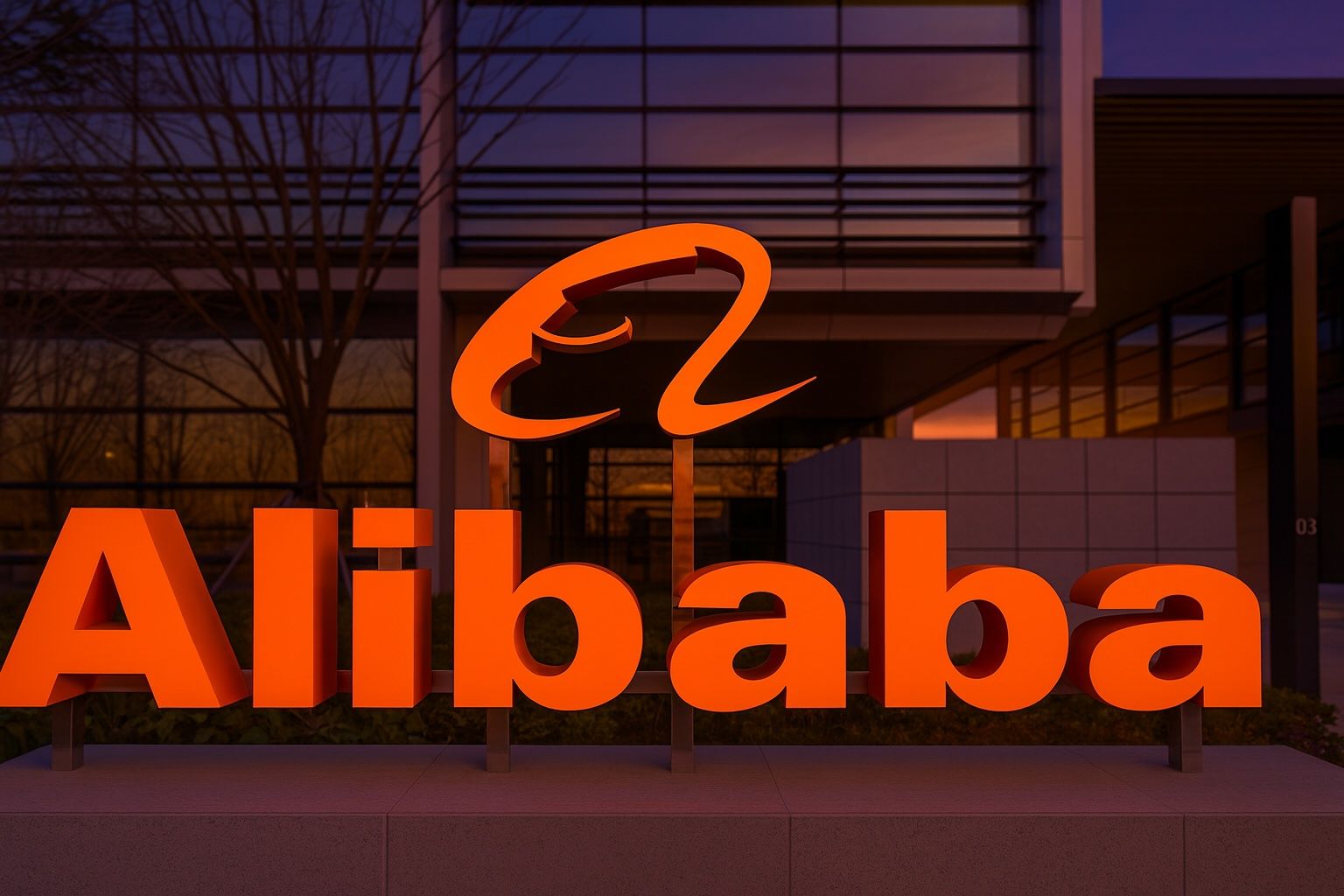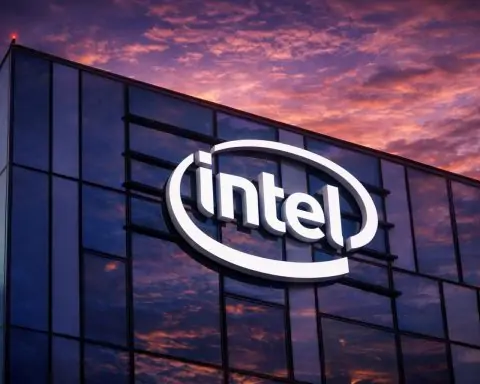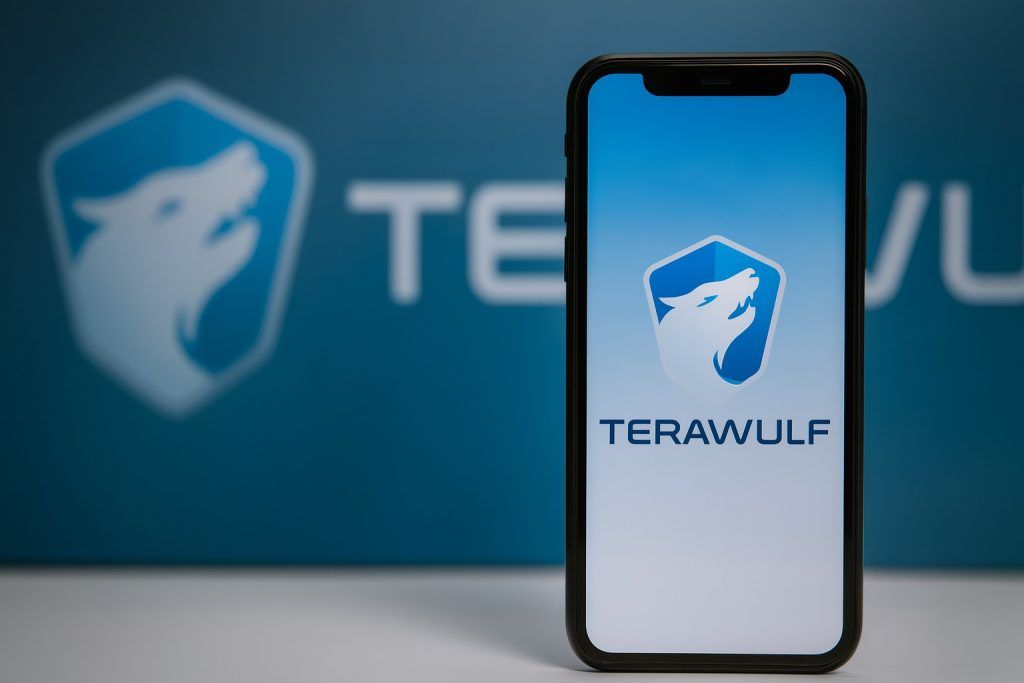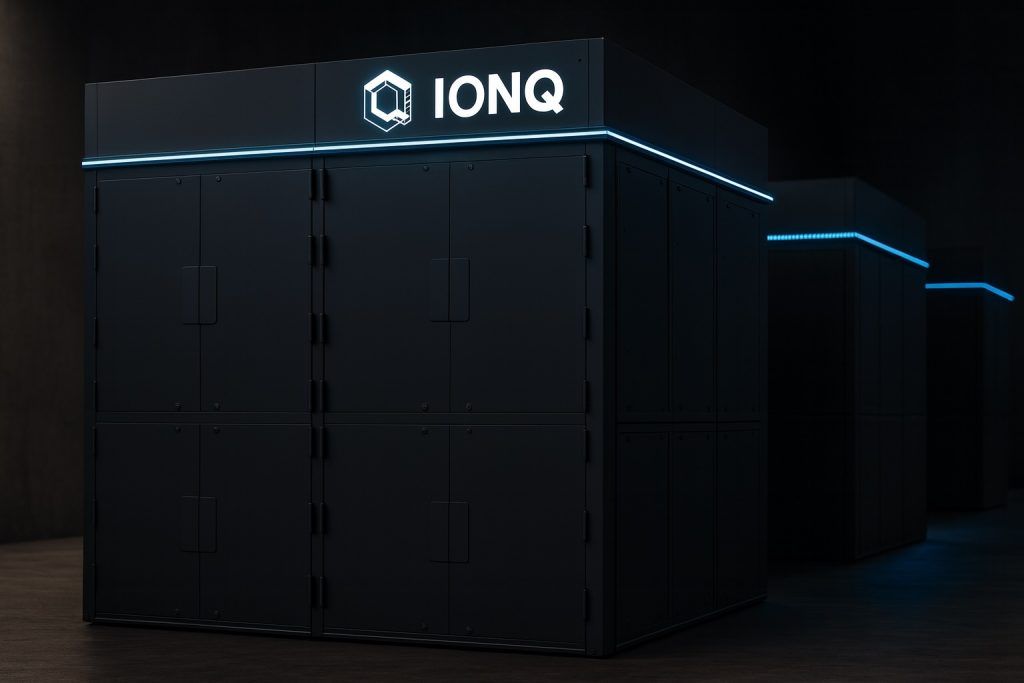- Surging Shares: Alibaba Group’s U.S. stock (NYSE: BABA) is trading around $174–$175 as of October 26, 2025, hovering near its highest level since 2019 and roughly doubling in value year-to-date [1]. The rally – about +85–97% YTD – far outpaces the broader market (the NYSE Composite is up just ~12% in 2025) [2].
- AI & Cloud Boom: Investor optimism is fueled by Alibaba’s aggressive push into artificial intelligence (AI) and cloud computing. Cloud revenue jumped +26% last quarter, beating expectations [3], and CEO Eddie Wu has pledged a massive ¥380 billion (~$53 billion) tech investment spree over three years [4]. Alibaba unveiled a cutting-edge 1-trillion-parameter AI model and new AI chips in partnership with NVIDIA, signaling ambitions to rival global AI leaders [5].
- New Products & Partnerships: In the past week, Alibaba launched a new AI chatbot integrated into its Quark app and began selling $660 AI-powered smart glasses, expanding its consumer tech offerings [6] [7]. It also struck a landmark NBA China deal – making Alibaba Cloud the NBA’s official cloud & AI partner – as Alibaba leverages technology in media and sports [8] [9].
- Singles’ Day Blitz: Ahead of China’s Nov. 11 Singles’ Day shopping festival, Alibaba is pouring a record ¥50 billion (~$7 billion) into discounts and coupons [10]. This unprecedented subsidy campaign (focused on VIP customers) aims to revive consumer spending in a sluggish economy, and early indications show dozens of top brands hitting ¥100+ million in hour-one sales [11].
- Easing Crackdown, Lingering Risks: Beijing’s heavy tech crackdown has largely calmed – a once “shadow” over Alibaba that’s now lifting [12]. However, U.S.–China tensions remain a wild card: October saw volatility after Washington hawks pushed for stricter chip export curbs to China [13], which briefly knocked Alibaba’s stock down ~3%. Geopolitical overhangs like tech export bans and trade policies continue to inject risk even as fundamentals improve.
- Bullish Analysts: Wall Street is overwhelmingly bullish on Alibaba. 17 out of 18 analysts rate BABA a “Buy” (just 1 Hold, 0 Sells) [14]. Twelve-month price targets average in the high-$180s, with some top calls as high as $230–$240 – implying considerable upside [15]. Recent upgrades include JPMorgan’s stunning 45% target boost (to HK$240) on cloud/AI momentum [16] [17]. The consensus view: Alibaba’s AI-fueled comeback is for real, though a few caution the stock’s huge run may have “priced in” much good news [18].
- Techs & Tactics: From a market technical standpoint, BABA’s chart is flashing bullish signals. Shares broke out above key resistance levels and even formed a “golden cross” (the 50-day moving average crossing above the 200-day) – a classic sign of upward momentum [19]. The stock is holding support around ~$160 [20], with high trading volumes on rally days confirming strong buying interest [21].
BABA Soars to Multi-Year Highs in 2025 Rally
Alibaba’s stock has staged a remarkable turnaround in 2025. After two years of languishing under China’s regulatory crackdowns and economic uncertainty, BABA is now one of the year’s top tech performers. The U.S.-listed shares recently climbed into the mid-$170s, territory not seen in about four years [22]. By early October, Alibaba’s Hong Kong shares (9988.HK) similarly hit HK$183+, the highest since 2021 [23] [24]. This marks an ~85–90% surge year-to-date [25] – a stark outperformance versus global indices. “Alibaba’s market capitalization has swelled to around HK$3.4 trillion (>$430 billion),” TS² Tech News noted, “putting it back among Asia’s most valuable companies” [26].
The rally accelerated in late September and into October amid a confluence of positive catalysts. On September 24, CEO Eddie Wu’s announcements of new AI initiatives ignited an 8% one-day spike in the U.S. stock [27]. A week later, as Hong Kong markets opened after Golden Week, Alibaba jumped another ~3.5% in one session (Oct 2) to HK$183 [28]. The driver: JPMorgan’s upgrade – analysts there raised their price target by 45%, to a Street-high HK$240, praising Alibaba’s cloud and AI prospects [29]. “Alibaba advanced 3.5% that day,” reported the South China Morning Post, buoying the entire Hang Seng Tech Index [30]. Notably, that Oct 2 close was Alibaba’s highest in nearly four years.
After peaking in early October, the stock saw a healthy pullback and some volatility. By mid-month, shares eased back to the high-$160s amid broader market jitters [31]. On October 8, for example, Alibaba fell about 3% in Hong Kong as investors grew cautious on renewed U.S.–China tensions [32]. U.S. lawmakers were reportedly urging tighter curbs on chipmaking gear sales to China, which spooked the Chinese tech sector [33]. Such headlines reminded investors that geopolitical risks – from export restrictions on AI chips to past delisting scares – are not fully gone. “Washington’s hawks have put renewed pressure on Chinese tech’s access to advanced semiconductors,” one market commentary noted, a potential hurdle for Alibaba’s cloud-AI hardware supply [34]. Still, these dips have been relatively modest and short-lived. Even after the early-October wobble, BABA remains up over 50% in the past six months [35]. Many see the consolidation as the market “digesting” Alibaba’s big gains while bracing for any macro news [36]. Overall, investor sentiment has flipped dramatically since last year – from fear to a growing optimism that Alibaba’s best days are ahead.
AI Ambitions and New Tech Fuel Optimism
A core narrative behind Alibaba’s surge is its all-in bet on AI and cloud technology. Under CEO Eddie Wu (who took the helm in late 2023), the company has aggressively pivoted to position itself as a leader in next-gen tech. “The narrative of Alibaba in 2025 is one of doubling down on innovation and expansion – pouring resources into next-gen AI technology,” observed TechStock² News, noting this bold strategy “sparked a rally” in Alibaba’s shares [37] [38].
In late September, Alibaba’s annual Apsara Conference became a showcase of these ambitions. The company unveiled “Qwen-3 Max,” a new AI model boasting a staggering 1 trillion parameters, putting it on par with the world’s most advanced AI systems [39]. It also debuted Qwen-3 Omni, a multimodal AI for vision and AR tasks, and touted collaborations with NVIDIA to co-develop AI chips and software [40]. This flurry of AI announcements electrified investors – Alibaba’s stock jumped ~8% in one day after the news, as the market began to re-price Alibaba as a serious AI contender [41]. “Alibaba has re-emerged as an AI superpower in the making,” one analyst said, with Wall Street gaining confidence that years of R&D investment are finally bearing fruit [42].
Those AI investments are already translating into results, especially in Alibaba’s cloud division. In the latest reported quarter (the June 2025 quarter), cloud computing revenue surged +26% year-on-year [43] – far above the ~10% growth of Alibaba’s core e-commerce segment. Demand for AI-driven cloud services has exploded in China, and Alibaba Cloud (recently rebranded as its Digital Technology and Intelligence Group) is supplying critical infrastructure for companies training large language models and other AI applications [44]. This cloud boom lifted Alibaba’s total revenue growth to about 14% YoY (RMB 247.7 billion) in the quarter [45]. “Major banks have taken note,” as TS² reported – in early October JPMorgan raised its 12-month target by nearly 45%, citing a “growth inflection” from Alibaba’s AI and cloud initiatives [46]. Others have followed suit with bullish calls (Nomura, Barclays, etc. raising price targets) as confidence grows in Alibaba’s tech pivot [47] [48].
Just this past week, Alibaba doubled down on its AI push with new product launches. On Oct. 23, the company rolled out a new AI chatbot assistant integrated into its Quark app [49] – marking a renewed foray into consumer AI. The chat assistant (free to use) offers conversational Q&A via text or voice, tapping Alibaba’s latest Qwen-3 model for “enhanced reasoning and understanding,” according to the company [50]. Alibaba is trying to gain traction in a consumer chatbot market currently dominated by rivals like ByteDance and Tencent; its earlier chatbot (Tongyi) had struggled to gain mass adoption [51]. The new Quark-based assistant, powered by Alibaba’s upgraded AI, is an attempt to change that.
At nearly the same time, Alibaba made a splash in hardware – launching AI-powered smart glasses for consumers. The company began presales for its “Quark AI Glasses” on Oct. 24, priced at ¥4,699 (≈$660) [52]. These smart glasses (first unveiled in prototype form in July) offer mixed-reality and AI features, and notably undercut the price of Meta’s similar smart glasses. Alibaba will start shipping the devices in December, aiming to carve out a spot in the nascent wearable AI market [53]. This move pits Alibaba against global tech peers in the race for wearable AI gadgets – underlining that Alibaba’s innovation drive spans not just software and cloud, but consumer devices too. Investors cheered the developments; Alibaba’s U.S. shares rose over 3% on Oct. 23–24 as these AI product announcements hit the wires [54] [55].
Beyond AI, Alibaba is also forging high-profile partnerships showcasing its tech prowess. Notably, earlier this month Alibaba struck a multi-year deal with the NBA in China. Announced on Oct. 9 during NBA preseason games in Macau, the partnership makes Alibaba Cloud the official cloud computing and AI partner of NBA China [56]. Alibaba will provide cloud infrastructure and AI tech to enhance the NBA’s Chinese app and digital fan experiences [57]. This deal marked the NBA’s first games in China since 2019, facilitated in part by Alibaba’s own executive vice-chairman (and Brooklyn Nets owner) Joe Tsai helping to mend relations [58]. Investors viewed it as a savvy move that leverages Alibaba’s cloud capabilities in sports/media and could drive usage of its cloud and streaming services [59]. Reuters noted the significance, reporting that “Alibaba Group said it would provide AI and cloud services to enhance fan experiences on the NBA app in China” [60]. The NBA tie-up underscores Alibaba’s widening influence and was seen as confidence-building news amid U.S.-China political strains.
Meanwhile, Alibaba is gearing up for the Singles’ Day shopping festival – the world’s biggest e-commerce event on November 11. Facing a cooling Chinese economy, Alibaba has announced an “unprecedented” promotional blitz. The company is investing ¥50 billion ($7 billion) in subsidies and coupons to entice shoppers [61] – the largest discount campaign in its history. Much of that is targeted at its 88VIP loyal customers, offering steep vouchers to spur high-volume purchases [62]. The Singles’ Day period has even been stretched to five weeks across China’s retail industry this year [63]. Early reports suggest a strong start: within the first hour of Alibaba’s sales kickoff, dozens of major brands (Nike, L’Oréal, local favorites, etc.) surpassed ¥100 million in sales each [64]. Alibaba has also woven new AI features into its shopping platforms – e.g. AI-driven search and recommendations to boost engagement [65] – and pushed “instant retail” (one-hour delivery) via heavy subsidies [66]. The success of Singles’ Day will be a key barometer for Alibaba’s consumer business momentum heading into year-end. A big showing could validate the company’s strategies, while any sign of tepid consumer demand would signal broader economic headwinds in China.
Easing Regulatory Cloud, But Geopolitics Bear Watching
One of the biggest overhangs on Alibaba – China’s regulatory clampdown on big tech – has largely faded in 2025. Between 2020–2022, Beijing’s crackdowns (from anti-monopoly fines to data security probes) slammed Alibaba’s growth and stock. But now, as Alibaba’s CEO noted, the regulatory environment has “largely eased” [67]. The notorious $2.8 billion antitrust fine from 2021 is in the rearview, and by 2024 regulators formally concluded major probes (like the “choose one of two” e-commerce monopoly investigation) [68]. Authorities remain watchful, but their approach has shifted from heavy-handed punishment to a more supportive-if-vigilant stance. For example, in late September, China’s Cyberspace Administration summoned Alibaba’s UC Browser unit over some “harmful content” issues [69]. However, that resulted in only a content notice with minimal market impact [70] – a far cry from the sweeping actions of prior years. The sense is that Beijing now sees tech giants as crucial to economic growth and is less inclined to destabilize them. This regulatory calm has removed a big psychological hurdle for investors. “The government formally concluded major probes by 2024… Overall, Beijing’s stance has shifted to a more supportive posture toward tech firms,” TechStock² noted [71] [72]. Without the constant fear of a new crackdown, Alibaba’s fundamentals (and stock price) can better reflect its business prospects rather than regulatory fear discounts.
That said, macro and political risks haven’t disappeared – they’ve just shifted mostly to the international arena. As discussed, U.S.–China tensions around technology remain a key watch factor. In October, reports of possible tighter U.S. export controls on advanced semiconductors rattled Chinese tech stocks [73]. Alibaba, like peers, relies on high-end chips (e.g. Nvidia GPUs) for its cloud and AI services [74]. Any new U.S. restrictions on chip sales to China could slow Alibaba’s AI/cloud momentum. So far, the 2025 rally has withstood these scares – partly because many investors believe worst-case scenarios (like forced delisting from U.S. exchanges) are unlikely now. Indeed, U.S. regulators gained access to audit Chinese firms’ books in 2022, easing delisting risks [75]. But the chip export battle is real: Washington continues to tighten the screws on China’s access to cutting-edge AI chips, and Beijing could retaliate, all of which creates headline risk for stocks like BABA.
Another angle is trade and diplomatic relations. Later this year, President Donald Trump and President Xi Jinping are expected to meet at the APEC summit (November 2025) – a potentially market-moving event [76]. Any signs of thaw or cooperation could boost Chinese stocks; conversely, new tariff threats or political frictions could hurt sentiment. In essence, Alibaba now finds itself in a more benign domestic policy climate but still navigating a complicated global one. Investors seem cautiously optimistic that business fundamentals will trump politics, but they are keeping a close eye on news out of Washington and Beijing.
Analysts Upbeat, Big Money Edges Back In
Wall Street and industry analysts have dramatically reversed course on Alibaba this year – from skepticism to outright optimism. As mentioned, virtually every analyst covering BABA has a Buy-equivalent rating on the stock at this point [77]. The average 12-month price target sits around $184 (roughly HK$1,440 for the U.S. ADR), which the stock is already nearing [78]. Many analysts have been raising their targets through the past quarter. For instance, JPMorgan’s new HK$240 target (for Hong Kong shares) implies ~36% upside from early October levels [79]. Jefferies recently hiked its target to $230, CLSA to $200, and Susquehanna to $190 – all reiterating bullish theses [80]. The most bullish forecasts now reach the $190–$200+ range on the U.S. ADR [81], which equates to HK$195–200 in Hong Kong. The common rationale: Alibaba’s growth engines (cloud, AI, international commerce) are revving up, China’s economy is stabilizing (albeit gradually), and the worst regulatory and shareholder overhangs have cleared [82] [83]. As one market strategist summed up, “Improved China outlook, cloud/AI momentum, and easing regulatory risk are key reasons for the re-rating.” [84]
Even some long-time bears have come around. Notably, Zacks Investment Research made headlines by downgrading BABA to “strong sell” in mid-October – an outlier view [85]. By contrast, heavyweights like Nomura and Barclays upgraded the stock or boosted targets around the same time [86]. Nomura lifted its target from $170 to $215 (Buy rating) in early October, and Barclays upped its target from $145 to $190 (Overweight) in September [87]. Such moves signal a renewed confidence in Alibaba’s trajectory, as these firms incorporate Alibaba’s latest results and strategic shifts into their models. According to MarketBeat data, Alibaba’s current consensus rating is a “Moderate Buy” with a consensus target of $190.18 per share [88] [89]. The sheer imbalance of Buy ratings suggests that many analysts see the recent pullback from highs as a buying opportunity rather than a peak. However, a few voices urge caution that Alibaba’s valuation (now about 20× earnings, with the stock up ~100% this year) may be running a bit hot if any growth hiccups occur [90] [91]. So far, though, the bullish voices are carrying the day.
Market experts are also weighing in. Hedge fund titan David Tepper reportedly made Alibaba a top holding this year, a notable vote of confidence from a famed value investor [92]. And in an anecdotal but symbolic win for Alibaba’s tech credibility, Airbnb CEO Brian Chesky revealed that Airbnb relies “a lot on Alibaba’s Qwen [AI] model” for its customer service chatbot, calling it “very good… fast and cheap” compared to other models [93]. Such endorsements underscore that Alibaba’s innovations are gaining recognition beyond China, potentially attracting global investors who had been wary.
Importantly, after a long stretch of skepticism, institutional money is cautiously flowing back into Chinese tech. Many international investors who were underweight China are increasing positions in 2025. Fund filings show a number of U.S. and global institutions added Alibaba shares in recent quarters [94] [95]. For example, one U.S. asset manager boosted its Alibaba stake by over 13,000% (from a small base) earlier this year [96]. Others like Bleakley Financial Group and Ethic Inc. disclosed new BABA positions in October [97] [98]. Of course, not everyone is piling in – some firms (e.g. Allspring and DekaBank) trimmed stakes recently [99] [100], likely locking in profits. But the overall trend is positive. Alibaba’s shareholder base also saw a major structural change: SoftBank, once Alibaba’s largest stakeholder (with ~30% ownership at the peak), has essentially exited its position. By 2023 SoftBank was down to ~3.8%, and in 2025 it signaled having no plans to buy or sell more – effectively ending its involvement [101]. This removal of the longtime “SoftBank overhang” has been a relief, as investors no longer fear a giant shareholder dumping millions of shares into every rally [102]. With SoftBank out and regulatory fears easing, market participants can focus squarely on Alibaba’s fundamentals and growth story again [103].
Overall, sentiment has markedly improved. As Alpine Macro analysts noted in early October, despite occasional jitters, “the positive re-rating is not over” for Chinese equities [104]. They cited China’s nascent economic stabilization and prospects of U.S.–China engagement (like the upcoming leadership meeting) as tailwinds [105]. For Alibaba, the sense is that 2025’s rebound is more than just a fleeting trade – it reflects real fundamental momentum and a re-calibration of investor expectations upward.
Technicals and Fundamentals: What’s Under the Hood
Alibaba’s eye-popping stock gains this year are supported by improving fundamentals, though not without some caveats. In its most recent earnings (for the quarter ended June 30, 2025), Alibaba delivered solid top-line growth: revenue was up ~14% year-on-year to RMB 247.7 billion [106]. This slightly undershot analyst forecasts, but was a healthy rebound pace. Crucially, the Cloud Intelligence segment (Alibaba Cloud) was the standout – +26% YoY revenue growth, handily beating expectations of ~18% [107] [108]. Core e-commerce (still Alibaba’s largest business) grew a more modest ~10%, reflecting the still-recovering state of Chinese consumer spending [109] [110]. Other newer ventures like local services and international retail showed promise but also intense competition.
On the profitability side, Alibaba is in a transitional phase. Heavy investments in strategic areas – from one-hour delivery services (“instant retail”) to user acquisition for Taobao/Tmall – have put pressure on margins. Last quarter’s operating income actually dipped 3%, and adjusted EBITDA fell 14% YoY [111]. Essentially, Alibaba is spending aggressively to drive future growth (especially in AI, cloud infrastructure, and regaining market share in segments like food delivery). These near-term margin sacrifices are a concern for value-focused investors, but so far the market has been forgiving. Alibaba still generates ample cash flow and remains highly profitable on an absolute basis. It’s also actively returning cash to shareholders: in fiscal 2025, Alibaba repurchased about $11.9 billion worth of stock, reducing its share float by ~5% [112]. This indicates management’s confidence in the company’s undervaluation earlier in the year and provides a backstop of support for the stock.
Alibaba’s balance sheet is strong – the company has a modest debt-to-equity ratio (~0.19) and a healthy liquidity position (current ratio 1.45) [113] [114]. Its market cap at ~$416 billion implies a valuation around 20× trailing earnings, or roughly 12–13× forward earnings (approximately 10× forward EBITDA) [115]. By its own historical standards, that’s not cheap – but it’s a far cry from the ultra-low multiples seen during the darkest days of the tech crackdown. Many analysts argue this valuation is still reasonable given Alibaba’s growth outlook [116]. For context, U.S. tech megacaps often trade at higher multiples with similar growth, and Alibaba’s sum-of-the-parts (spinning off cloud, logistics, etc.) could unlock value down the road. One cautious model cited by a market observer did peg Alibaba’s fair value closer to ~$107 if using very conservative assumptions [117]. However, that appears to be a minority view at present, as the company’s execution in 2025 has instilled confidence that higher growth is attainable.
From a technical analysis perspective, Alibaba’s stock chart looks the best it has in years. As noted, the shares have broken above major resistance levels that stymied past rallies. The run-up propelled the 50-day moving average above the 200-day – known as a “golden cross,” often interpreted as a bullish long-term signal [118]. Importantly, BABA has held above former resistance which now acts as support (~$160 on the U.S. ADR) during pullbacks [119]. Trading volumes have spiked on up-days, indicating strong accumulation by buyers [120]. Technical traders point out that the stock also cleared its downtrend line from the 2020 highs, confirming a trend reversal. Momentum indicators like RSI have occasionally hit overbought levels, but thus far any overbought conditions have worked themselves off during brief consolidations rather than deep corrections. In short, momentum remains on Alibaba’s side, barring any macro shocks. “Alibaba’s share price broke out above key resistance, formed a ‘golden cross’ of its moving averages, and is holding support around $160,” observed TechStock², encapsulating the bullish technical picture [121].
Outlook: Is the Rally Sustainable?
Looking ahead, Alibaba faces high expectations – but also significant opportunities – in the coming months. In the near term (next 1–2 quarters), several catalysts and events will likely determine whether BABA’s rally has more room to run. First up is Alibaba’s earnings report in November (for the quarter ending Sept 2025). Investors will be watching if revenue growth accelerates further into the high-teens or ~20% range as some expect [122]. The company’s management has guided for improvements, and year-ago comparables are getting easier. Strength in cloud and international commerce could lift results, while any unexpected weakness in consumer spending (domestic e-commerce) would be a red flag. Profit margins will also be scrutinized – continued heavy spending could mean flat or lower short-term profits, though as long as the top-line is robust, the market may tolerate it [123].
Then comes the all-important Singles’ Day performance (November 11). A blowout Singles’ Day would affirm Alibaba’s dominance and marketing strategy, potentially boosting sentiment. On the flip side, if Chinese consumers remain tight with their wallets despite discounts, it could renew worries about China’s economy and pressure Alibaba’s stock (and those of peers). Early signals, however, show promise with strong initial sales and increased use of AI engagement tools [124].
Broader economic policy is another watch item. Some analysts speculate that if post-holiday retail data disappoints, Beijing might roll out stimulus measures or consumption incentives [125] – which would likely benefit Alibaba by boosting consumer confidence. Additionally, any improvement in U.S.-China trade relations (for example, a constructive meeting at APEC in late 2025) could remove some risk discount from Chinese stocks [126]. Conversely, any deterioration (new tariffs or sanctions) would do the opposite. It’s a binary factor largely out of the company’s control.
In terms of forecasts, the street consensus 12-month price target (~$184) suggests moderate upside from current levels [127]. However, many bulls see room to run beyond that if Alibaba continues executing. For instance, top-tier investment bank Goldman Sachs recently highlighted Alibaba Cloud’s “full-stack AI capabilities, diversified chip supply, and international expansion” as driving a multi-year growth spurt, leading them to project 31–38% annual cloud revenue growth over the next three years [128] [129]. Several firms forecast Alibaba Cloud revenues rising ~30% YoY and contributing significantly to profits, which would underpin a higher valuation [130]. There’s also anticipation around Alibaba’s planned business unit spinoffs (the company is restructuring into six units, with the Cloud division a prime IPO candidate) – any concrete progress on that in 2026 could unlock value [131] [132]. In the medium term (1–2 years), analysts broadly expect Alibaba’s earnings to grow double-digits annually [133]. Achieving that could push the stock into the $180s–$200 range. Some upside scenarios even envision Alibaba approaching a trillion-dollar market cap in the distant future if its AI bets truly pay off – a speculative notion, but reflective of the renewed ambition around the company [134].
That said, investors should remain mindful of risks. Competition is still fierce across all fronts – from JD.com and Pinduoduo in e-commerce to Tencent and Baidu in cloud and AI [135]. Alibaba will need to execute near-flawlessly on its new initiatives to justify further stock gains. Any signs of AI or cloud growth stalling, or a major regulatory/political setback, could trigger a reality check given the stock’s big run. Additionally, if global markets turn risk-averse (e.g. due to interest rate moves or geopolitical shocks), high-flying tech names like Alibaba could see outsized pullbacks.
For now, however, the mood around Alibaba is decidedly optimistic. The company’s 2025 resurgence – driven by innovation, strategic focus, and a bit of regained favor with authorities – has laid a strong foundation. As one market strategist put it, Alibaba’s comeback story is about “making Alibaba great again” by marrying its e-commerce dominance with cutting-edge technology [136] [137]. If management delivers on the promise of being China’s answer to an “AWS + OpenAI in one” [138], the current stock rally may just be an opening act. Investors will be closely watching the upcoming earnings and Singles’ Day scorecard for confirmation that Alibaba’s new era of growth is here – and potentially durable. Bottom line: Alibaba’s stock is on fire in 2025, and while some smoke may cloud the path, many experts believe this flame has more fuel to burn.
Sources: Alibaba Group news and filings; Reuters [139] [140]; TechStock² (TS2.tech) [141] [142]; MarketBeat [143] [144]; Los Angeles Times/Bloomberg [145]; Benzinga [146] [147]; Singles’ Day coverage (Reuters) [148] [149].
References
1. ts2.tech, 2. ts2.tech, 3. ts2.tech, 4. ts2.tech, 5. ts2.tech, 6. www.reuters.com, 7. www.reuters.com, 8. www.reuters.com, 9. www.reuters.com, 10. www.reuters.com, 11. www.reuters.com, 12. ts2.tech, 13. ts2.tech, 14. ts2.tech, 15. ts2.tech, 16. ts2.tech, 17. ts2.tech, 18. ts2.tech, 19. ts2.tech, 20. ts2.tech, 21. ts2.tech, 22. ts2.tech, 23. ts2.tech, 24. ts2.tech, 25. ts2.tech, 26. ts2.tech, 27. ts2.tech, 28. ts2.tech, 29. ts2.tech, 30. ts2.tech, 31. ts2.tech, 32. ts2.tech, 33. ts2.tech, 34. ts2.tech, 35. ts2.tech, 36. ts2.tech, 37. ts2.tech, 38. ts2.tech, 39. ts2.tech, 40. ts2.tech, 41. ts2.tech, 42. ts2.tech, 43. ts2.tech, 44. ts2.tech, 45. ts2.tech, 46. ts2.tech, 47. www.marketbeat.com, 48. www.marketbeat.com, 49. www.reuters.com, 50. www.reuters.com, 51. www.reuters.com, 52. www.reuters.com, 53. www.reuters.com, 54. www.marketbeat.com, 55. www.marketbeat.com, 56. www.reuters.com, 57. www.reuters.com, 58. ts2.tech, 59. ts2.tech, 60. www.reuters.com, 61. www.reuters.com, 62. www.reuters.com, 63. www.reuters.com, 64. www.reuters.com, 65. www.reuters.com, 66. www.reuters.com, 67. ts2.tech, 68. ts2.tech, 69. ts2.tech, 70. ts2.tech, 71. ts2.tech, 72. ts2.tech, 73. ts2.tech, 74. ts2.tech, 75. ts2.tech, 76. ts2.tech, 77. ts2.tech, 78. ts2.tech, 79. ts2.tech, 80. ts2.tech, 81. ts2.tech, 82. ts2.tech, 83. ts2.tech, 84. ts2.tech, 85. www.marketbeat.com, 86. www.marketbeat.com, 87. www.marketbeat.com, 88. www.marketbeat.com, 89. www.marketbeat.com, 90. ts2.tech, 91. ts2.tech, 92. ts2.tech, 93. www.latimes.com, 94. www.marketbeat.com, 95. www.marketbeat.com, 96. ts2.tech, 97. www.marketbeat.com, 98. www.marketbeat.com, 99. www.marketbeat.com, 100. www.marketbeat.com, 101. ts2.tech, 102. ts2.tech, 103. ts2.tech, 104. ts2.tech, 105. ts2.tech, 106. ts2.tech, 107. ts2.tech, 108. ts2.tech, 109. ts2.tech, 110. ts2.tech, 111. ts2.tech, 112. ts2.tech, 113. www.marketbeat.com, 114. www.marketbeat.com, 115. ts2.tech, 116. ts2.tech, 117. ts2.tech, 118. ts2.tech, 119. ts2.tech, 120. ts2.tech, 121. ts2.tech, 122. ts2.tech, 123. ts2.tech, 124. www.reuters.com, 125. ts2.tech, 126. ts2.tech, 127. ts2.tech, 128. www.benzinga.com, 129. www.benzinga.com, 130. www.benzinga.com, 131. ts2.tech, 132. ts2.tech, 133. ts2.tech, 134. ts2.tech, 135. ts2.tech, 136. ts2.tech, 137. ts2.tech, 138. ts2.tech, 139. www.reuters.com, 140. www.reuters.com, 141. ts2.tech, 142. ts2.tech, 143. www.marketbeat.com, 144. www.marketbeat.com, 145. www.latimes.com, 146. www.benzinga.com, 147. www.benzinga.com, 148. www.reuters.com, 149. www.reuters.com







